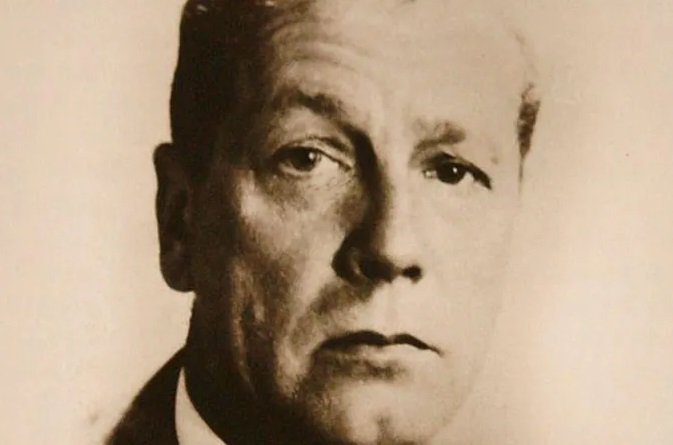In 1939, as German tanks rolled into Poland, a renowned Polish artist, Stefan Norblin, and his film-star wife, Lena, made the difficult decision to flee their homeland. Pawning their jewelry and abandoning their dream home in Warsaw, they embarked on a perilous journey across Europe, seeking safety. Their ultimate goal was to reach the United States, but fate had other plans for the couple, leading them to colonial India, where Norblin’s artistic journey would take an unexpected turn.

Between 1941 and 1946, Norblin spent six transformative years in India, where his artistic talent found a home in the opulent palaces of Indian maharajas. During this time, Norblin created a unique fusion of Western aesthetics and Indian iconography, leaving behind a legacy of murals and paintings that blended the art deco style popular in Europe with Indian traditions.
An Artistic Partnership with Indian Royalty
Arriving in India through a circuitous route that took them across Romania, Turkey, and Iraq, the couple first landed in Bombay (now Mumbai). India, with its vibrant confluence of cultures, religions, and languages, was a stark contrast to the world they had known in Poland. Yet, it was here that Norblin’s artistic journey took a new direction.

At the time, many of India’s maharajas were captivated by Western trends, particularly the art deco movement that had taken Europe by storm. The sons of Indian royalty, who had studied abroad, were eager to incorporate this modernist style into their palaces. One of Norblin’s earliest commissions in India came from Maharaja Mahendrasinhji’s son, who was constructing a new palace in Morbi, Gujarat. Tasked with decorating its interiors, Norblin created expansive murals that combined Indian subjects—such as Hindu gods and local wildlife—with the geometric shapes, bold colors, and minimalist forms characteristic of the art deco movement.
Norblin’s murals in The New Palace at Morbi depict a rich tapestry of hunting scenes, portraits of ancestors, and mythological figures like Lord Shiva, who is often portrayed in a state of deep meditation. His human figures, elongated and ethereal, seem to float within the compositions, blending both light and dark complexions with a mystical, nymph-like quality.

The Grandeur of Umaid Bhawan Palace
Norblin’s next significant commission came from Maharaja Umaid Singh of Jodhpur, whose grand palace—Umaid Bhawan—required extensive interior design and murals. Here, Norblin’s talent reached new heights. His murals of Hindu deities, particularly Durga, the fierce goddess of war, are among the most captivating. In one painting, Durga appears as an Egyptian princess, riding a lion and slaying a demon, her many arms wielding an array of weapons. In another, she is a shadowy figure, rendered in bold strokes of black paint, her form streaking across the wall like a phantom.
The palace’s famed Oriental Room also bears Norblin’s touch, with a series of six murals depicting scenes from the Ramayana. These murals tell the story of goddess Sita’s abduction by the demon king Ravana and her trial by fire to prove her chastity to her husband, Lord Ram. The intricate details and dynamic compositions of these murals blend the classical Indian epic with Norblin’s modernist sensibility.

In addition to the murals, Norblin designed entire rooms within Umaid Bhawan, including the king’s and queen’s suites, the dining room, and various sitting areas. His work added a unique fusion of European modernism and Indian tradition, creating spaces that were both luxurious and deeply symbolic.
A Legacy Rediscovered
Unfortunately, Norblin’s artistic journey did not have a happy ending. After leaving India, he and Lena relocated to San Francisco in the United States, where they hoped to continue their careers. However, Norblin struggled to gain recognition in the American art scene. As commissions dwindled and his eyesight deteriorated due to glaucoma, Norblin slipped into depression. In 1952, unable to bear the thought of becoming a burden on his family, he tragically took his own life.
For years, Norblin’s legacy in India faded into obscurity, with many of his works deteriorating due to neglect and the harsh Indian climate. It wasn’t until the 1980s that his murals were rediscovered by Claus-Ullrich Simon, a scholar of Norblin’s work. Since then, efforts have been made to restore and preserve these masterpieces. The Polish government has also played a role in conserving his paintings, ensuring that future generations can appreciate the unique cultural collaboration that Norblin’s work represents.
Today, Stefan Norblin’s art stands as a testament to the power of cultural exchange. His murals, which blend the elegance of European modernism with the spiritual and mythological richness of Indian art, offer a glimpse into a unique moment in history—when a Polish artist, displaced by war, found a new home in the palaces of Indian maharajas, and created timeless works of art that continue to captivate viewers.


